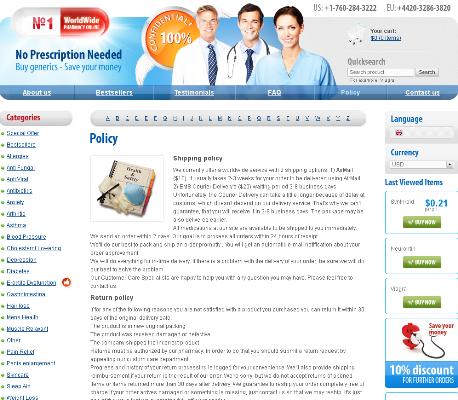Discovery: the Birth of Propranolol (inderal)
In the 1950s, the quest for new cardiovascular medications was ripe with innovation. Enter Dr. James Black, a visionary pharmacologist whose work revolutionized the field. Black’s experimentation with various compound medications led to the serendipitous discovery of propranolol, later branded as Inderal. Unlike its predecessors, this beta-blocker exhibited remarkably effective results in managing heart ailments, quickly capturing the attention of the medical community.
Dr. Black’s elixir wasn’t just a lucky hit; it was a product of meticulous research and bioengineering. The newfound compound proved to be a game-changer, especially for angina patients, who experienced significant symptom relief. As word spread, enthusiasm for Black’s creation surged, setting the stage for a radical shift in cardiovascular treatment protocols.
| Year | Milestone |
|---|---|
| 1950s | Dr. James Black begins experiments |
| 1962 | Propranolol discovered |
| 1964 | Propranolol branded as Inderal |
With the development of propranolol, the paradigm was destined to shift. No longer were patients resigned to a narrow selection of treatments; propranolol offered a new script for managing cardiovascular health. Its efficacy and relatively low side-effect profile helped it rapidly gain traction among physicians and patients alike.
Breakthrough in Cardiology: Inderal's Early Uses

Inderal marked a watershed moment in cardiology, offering newfound hope for patients dealing with cardiovascular issues. Initially, physicians scripted it for managing angina and arrhythmias, its efficacy quickly becoming evident. With its ability to reduce myocardial oxygen demand, Inderal soon became a staple in the cardiologist's arsenal. Hospitals, often running stat on critical meds, saw a rapid adoption. The compound medication's versatility further allowed for treating hypertension, leading to a transformative impact on patient care, supported by subsequent studies affirming its broad applications.
Fda Approval and Initial Market Reception
https://galenapharm.com
When Inderal received FDA approval, it was a groundbreaking moment in the world of medicine. This 'script' was not just another tablet; it marked a revolution in treating cardiovascular conditions. Upon its release, Inderal quickly gained popularity among healthcare professionals and patients, who lauded its efficacy.
As doctors across the country started to 'count and pour' this new medication, the market reception was overwhelmingly positive. Prescription rates soared, and the buzz around Inderal established it as a cornerstone in modern cardiology.
Expansion: Inderal's Growing Medical Applications

Inderal's prominence expanded as doctors discovered its efficacy beyond cardiology. Initially scripted for heart-related ailments, it began showing promise in treating an array of conditions. Physicians observed its benefits in mitigating migraines, providing relief where other medications had fallen short. Inderal’s role continued to grow; it became a key player in managing anxiety and symptoms of hyperthyroidism. As the compound medication gained success, researchers explored its potential further. Inderal soon found use in controlling tremors, aiding patients with essential tremor or Parkinson's disease. The medication’s versatile applications made it a staple in many treatment plans, showcasing its broad therapeutic capabilities. With each new discovery, Inderal cemented its place in modern medical practice, proving indispensable for a myriad of health issues.
Technological Advancements and Improved Formulations
https://gaetzpharmacy.com
The advent of Propranolol, marketed as Inderal, revolutionized the realm of cardiology through a series of technological advancements. The introduction of improved formulations marked a turning point; these variants offered superior bioavailability and stability, making the medication more effective and user-friendly. Clinically, this meant fewer side effects and more consistent efficacy, broadening Inderal's Rx applications beyond hypertension and angina to include anxiety, migraine prevention, and essential tremor. As the medical community strove for optimal patient outcomes, automated dispensing systems (robots) gained momentum, enhancing the accuracy and efficiency of Count and Pour processes.
Emerging research continues to refine Inderal's usage through advanced pharmaceutical technologies. Investments in controlled-release tablets have minimized dosing frequency, easing the Pill Burden for patients. Additionally, the development of algorithms in the DUR system ensures meticulous Sig adherence, reinforcing the importance of consistent patient compliance. The innovations and efficiencies in its formulation have established Inderal as a versatile and reliable medication across diverse medical scenarios, illustrating the remarkable progress since its inception.
| Technological Feature | Impact on Inderal |
|---|---|
| Improved Bioavailability | Enhanced effectiveness and fewer side effects |
| Controlled-Release Tablets | Minimized dosing frequency, reduced Pill Burden |
| Automated Dispensing Systems | Increased accuracy in prescription fulfillment |
Refining Inderal's formulations doesn't just streamline user experience but also pushes the boundaries of pharmacological science, paving the way for future innovations in cardiovascular and neurological treatments. As such, the progressive enhancements to Inderal have expanded its therapeutic horizon while setting standards for the development of similarly structured compounds.
Modern Usage and Ongoing Research Endeavors
purchase amitriptyline online
As we move into the modern era, Inderal continues to play a crucial role in treating various conditions, including hypertension and anxiety. Its versatility as a 'comp' medication has led to its widespread adoption in therapy for migraines and even some tremor conditions. The 'Meds check' process is crucial, ensuring that patients understand their 'script' directions and potential side effects. Ongoing research aims to refine its effectiveness, looking at new formulations and delivery methods to enhance patient outcomes and convenience.



